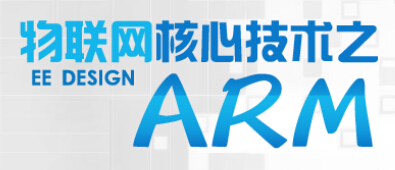The development of wearable electronic systems, whether biometric, communication or virtual reality, extends the concept of embedded systems to new and unknown areas. Putting sensors and output devices on the operator creates a new word - the electronic man: a combination of human and embedded systems. Wearable systems open up new horizons for real-world applications and need to revisit the embedded architecture. The sensor group used in a stickable or ingestible manner is completely isolated from traditional power, ground and I/O connections. To achieve small size and near-zero power consumption, small sensor groups support traditional local signal processing, storage, and wireless interconnection, and are not limited to this. This is a dilemma that designers must solve. Separate the system One way to solve the problem of wearable systems is to refer to traditional embedded system designs, which include sensors, actuators, and displays that connect to the user's body. Driven by mobility, comfort and hidden demand, systems need to be separated. After the sensors, output devices, and computing resources are physically separated from each other, take a look at what happens to the system architecture. As an example, refer to the design of smart glasses. In order to avoid clichés, we don't discuss the familiar consumer products, but look at the glasses designed by the industrial equipment supplier XOEye. These glasses are used for component observation, inventory processing, and on-site maintenance. The system features a stereo-mounted 720-line video camera, voice input, and LED and voice output, designed to help people perform some pre-defined tasks in an interactive manner. Xonye CTO Jon Sharp explained that the glasses collect and analyze the stereoscopic images seen by the user, enhancing the resolving power of the components, and measuring the size and shape without physical contact or measuring tools during the repair process. Interact with the technician - "Adjust the screws on the left side first" or warn of possible safety hazards with a flashing red LED. "Don't go there!" This traditional method of design uses a camera and microphone mounted on the glasses, then performs video processing, target recognition, and establishes a wireless communication link through the backpack and battery behind it. For this design, the traditional user response is to look at the backpack and then carefully bend down to use the system. Let us enter the concept of wearable technology. XOEye's approach is to achieve completely autonomous glasses. This goal clearly has space and power constraints. We can't magic, and these restrictions force some calculations to be done remotely, usually in the cloud. But dividing the computational load also brings new design challenges. Establish link On the Internet of Things (IoT), moving a large number of computing tasks to the cloud is not a new concept. Chakra Parvathaneni, senior director of business development at Creative Technology, points out that this division varies from application to application. He noticed that "the home thermostat has a lot of local processing tasks, but Apple's Siri is almost in the cloud." In the case of XOEye, moving tasks to the cloud means either having enough bandwidth to deliver two streams of video in the original format or performing video compression in real time in the glasses. The latter is feasible with existing media processing chips, but with a properly sized battery. However, there is another problem. Sharp reminds, “Even if there is no link, you must maintain the human interface and some features. For example, when you lose your WiFi connection, be sure to identify security issues in real time.†Some features require a certain degree of continuous real-time response. - Cloud computing at the far end of the Internet is not guaranteed. These problems require local processing that contradicts the size, weight, and power consumption limitations of the glasses. XOEye originally wanted to solve this problem by using the OMAP architecture combined with the MCU and the accelerator. The OMAP SoC can handle traditional media processing tasks, but Sharp laments that "real-time stereo ranging is not possible." Therefore, XOEye turned to CPU plus FPGAs, enabling them to build energy-efficient applications regardless of the application's tasks. Local accelerator. Smart hub Even if the operating conditions are guaranteed to be locally interconnected with the wireless hub, the unresolved uncertainty from the hub to the cloud via the Internet will introduce unacceptable uncertainties. This is one of the structural challenges facing IoT. With these in mind, if you want to do some computing tasks outside of your wearable device, you can put it on your local wireless hub instead of the cloud (Figure 1). Of course, this can't just use a commercial WiFi hub. Figure 1. Wearable embedded system becomes a smart hub wireless network Integrating compute nodes in a WiFi hub dramatically increases the flexibility of system design. In contrast, hubs are generally unrestricted in terms of space and power consumption, so you can put some computing and storage resources there. Short-range WiFi links provide reliable broadband, predictable latency connections, and support for hubs to participate in critical control or human-machine interface loops, where unexpected delays can cause problems. Moreover, the hub has a multitasking CPU and corresponding accelerators that perform the processing tasks of many remote wearable devices. More embedded design, ARM technology topics are waiting for you! Modicon TSX MicroCompact, modular PLC up to 484 I/O
Compact, modular PLC for OEM machine builders and infrastructure, with up to 484 I/O
of logic. Telemecanique TSX PLC,Micro-Software Cartridge,Memory Module,Digital Output Module Xiamen The Anaswers Trade Co,.LTD , https://www.answersplc.com

The new system drastically increased the functionality of the controls while reducing the cabinet space that housed the logic.
The first PLC, model 084, was invented by Dick Morley in 1969.The first commercial successful PLC, the 184, was introduced in 1973 which was designed by Michael Greenberg.